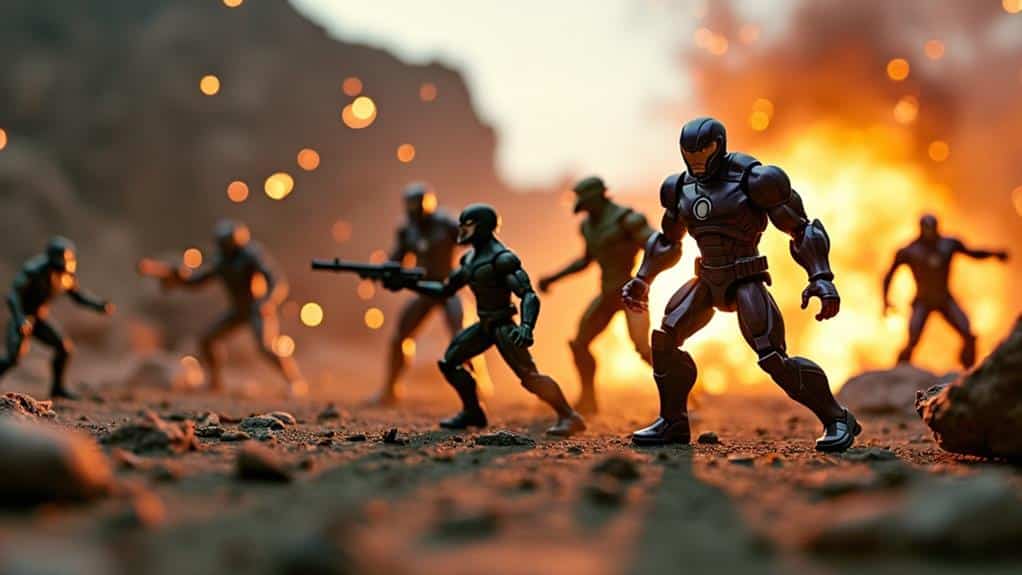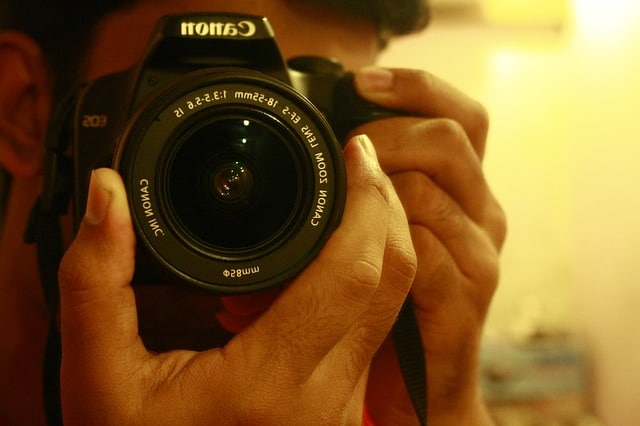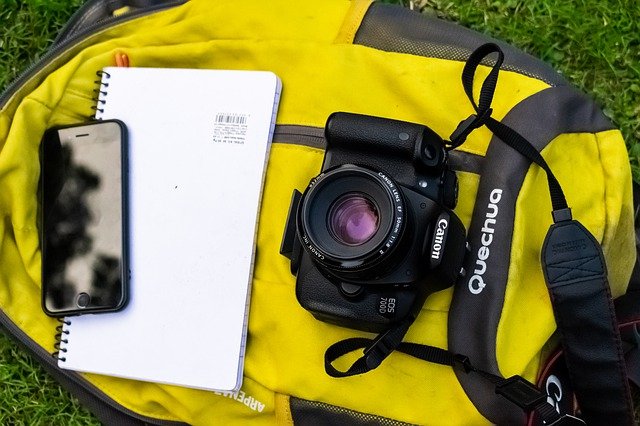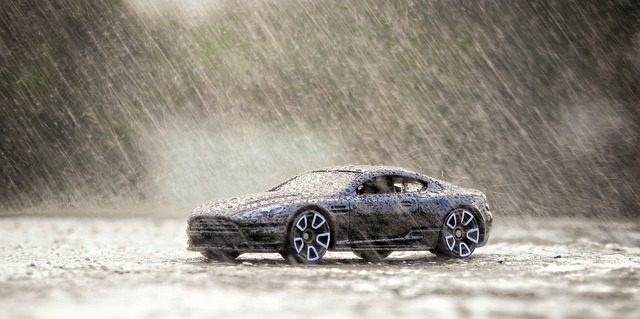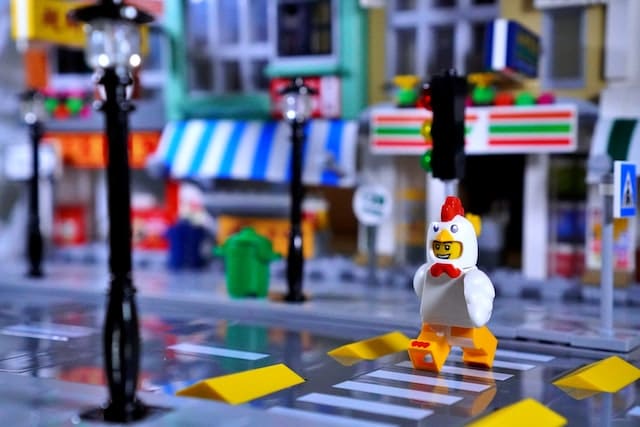You might wonder what elevates a simple toy photo into an epic action shot. It starts with selecting the right figures, ones that boast detailed features and high articulation. But that's only the beginning. Mastering dynamic poses involves experimenting with angles and limb positions to convey motion and emotion convincingly. Perfect lighting techniques can eliminate harsh shadows and add depth, making the scene more lifelike. Then, there's the matter of realistic backgrounds and capturing motion through camera settings and post-production. Have you ever considered how these elements combine to create truly compelling images?
Key Takeaways
- Utilize detailed, high-articulation figures to create expressive and dynamic poses.
- Employ natural light or multiple light sources for flattering and consistent illumination.
- Create realistic backgrounds using appropriate scale materials and natural elements.
- Capture motion with correct camera settings and enhance effects in post-production.
- Experiment with practical effects like water splashes and smoke to add authenticity.
Choosing the Right Figures
Selecting the perfect figures is crucial for capturing compelling toy photography. You need to ponder several factors when choosing which toys to photograph. First, look for figures with detailed features and high articulation. These aspects allow for more expressive and realistic shots. Avoid figures with limited movement or poor craftsmanship as they can limit your creative possibilities. For instance, using popular Funko Pop! figures can guarantee that your shots have a broad appeal due to their detailed designs.
Next, think about the scale of your figures. Consistency in scale verifies that your scenes look cohesive. Mixing scales can confuse the viewer and detract from the visual impact of your work. Stick to one scale per shoot to maintain a professional appearance.
Ponder the character's popularity and recognizability. Iconic characters often resonate more with viewers and can make your photos more engaging. However, don't shy away from lesser-known figures if they offer unique visual opportunities or align with your creative vision
Mastering Dynamic Poses
Capturing dynamic poses can elevate your toy photography from mundane to mesmerizing. To start, focus on the articulation points of your action figures. These points allow for a range of movements that can make your toys look like they're leaping into action rather than just standing still. Experiment with different angles and limb positions to find the most engaging pose.
Think about the story you're trying to tell. Dynamic poses should convey motion and emotion. Imagine how a real person or character would react in a given situation. Use reference images from comic books, movies, or even sports photography to inform your poses.
Don't forget the importance of balance. A well-balanced figure can hold a dynamic pose without falling over. Sometimes, using a small stand or some sticky tack can help maintain stability without being visible in the final shot. Attention to detail is vital in ensuring that the pose feels authentic and lifelike.
Lastly, practice makes perfect. The more you experiment with poses, the better you'll get at creating lifelike, dramatic scenes. Take multiple shots from various angles to find the best one. Over time, you'll develop an eye for what works and what doesn't, making your toy photography truly epic.
Perfecting Lighting Techniques
When it comes to toy photography, mastering lighting techniques can transform your work from ordinary to extraordinary. The right lighting not only highlights the intricate details of your toys but also sets the mood and enhances the overall composition. Start by using natural light; it's soft, diffused, and often the most flattering. Position your toys near a window where the sunlight can provide a gentle, even illumination. Remember, natural light sources offer a range of color temperatures throughout the day, adding varied tones to your photos.
If you're shooting indoors, consider using a lightbox or multiple light sources to eliminate harsh shadows. LED lights are a great choice because they're versatile and offer consistent brightness. Experiment with different angles; side lighting can create dramatic shadows, while backlighting can give your toy photos a magical, glowing effect.
Also, don't overlook the power of practical lights like small lamps or even your phone's flashlight for creating focused highlights. Use reflectors or white cards to bounce light back onto your subject, filling in shadows and adding depth. Finally, practice using diffusers to soften any harsh light, ensuring a balanced exposure. By refining your lighting techniques, you'll elevate your toy photography to professional levels in no time.
Creating Realistic Backgrounds
While mastering lighting techniques can dramatically enhance your toy photography, creating realistic backgrounds is equally important for achieving a riveting final image. A well-crafted background can transport viewers into the miniature world you've created and make your toys look like they're part of a grander scene. Start by considering the theme and setting of your shot. Are you aiming for an urban landscape, a dense jungle, or a futuristic sci-fi environment? Once you've decided, gather materials that will help you build this backdrop. Use printed photos, dioramas, or even natural elements like rocks, sand, and plants to add depth and authenticity. Pay attention to scale. The background elements should match the size of your toys to maintain realism. If you're photographing a 6-inch action figure, a small pebble could look like a boulder, while a tiny twig might seem like a large tree
Capturing Motion and Effects
To add a dynamic edge to your toy photography, nothing beats the thrill of capturing motion and effects. Start by choosing the right settings on your camera. A fast shutter speed, around 1/1000th of a second, freezes action, while a slower speed, like 1/30th, can blur movement for a sense of speed. Experiment with both to see what fits your vision best. For even more creative control, consider using a portable LED light panel to highlight your subject and enhance the effect. Adding effects can elevate your shots even further. Use practical effects like water splashes, sand, or smoke for an authentic feel. You can create a splash with a dropper or blow sand to simulate an explosion. For smoke, consider a vape pen or dry ice for a controlled environment.
Don't forget about post-production. Software like Photoshop or Lightroom can enhance motion effects with blur tools or add digital effects like lens flares and light streaks. Just be careful not to overdo it; subtlety often works best
At a Glance
You've got all the ingredients for epic action shots in toy photography. Choose detailed, high-articulation figures to express dynamic poses. Play with angles to convey motion and emotion. Perfect your lighting to add depth and eliminate harsh shadows. Craft realistic backgrounds and use camera settings, practical effects, and post-production to capture motion and effects. With these techniques, you'll bring your scenes to life and elevate your toy photography to an epic level. So, get creative and start shooting!

